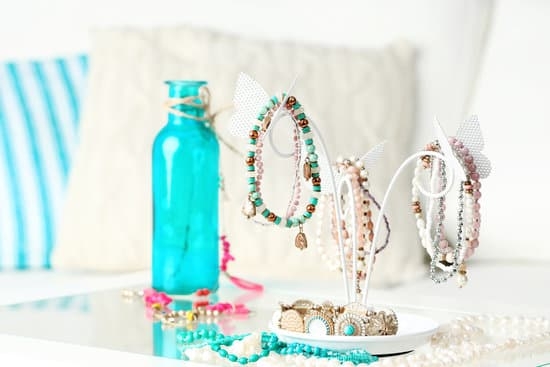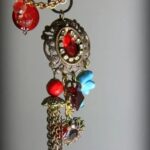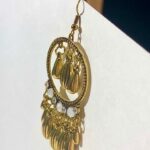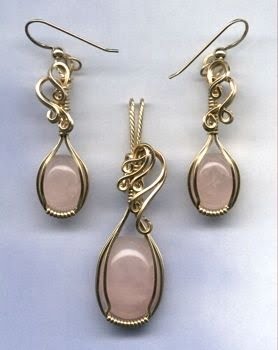Diamond jewelry holds both sentimental and financial value for many individuals. Whether you have inherited a piece or are looking to sell, it is essential to understand the worth of your diamond jewelry.
In this article, we will delve into the intricacies of determining the value of your diamond jewelry, dispelling common misconceptions and uncovering valuable insights.
By exploring the 4 C’s (carat weight, cut, color, and clarity), assessing carat weight and understanding diamond cut, evaluating diamond color and clarity, examining additional factors that influence worth, seeking professional guidance through accurate appraisal, and ultimately determining the worth of your diamond jewelry, you will be armed with the knowledge needed to make informed decisions.
Before we dive into the specifics of determining worth, it is crucial to acknowledge common misconceptions about diamond value. Many people believe that size alone determines a diamond’s worth; however, there are other factors to consider as well. Additionally, while certification and appraisal play significant roles in assessing value, they may not always provide an accurate representation. Throughout this article, we will explore these misconceptions and reveal the secrets to uncovering the true worth of your diamond jewelry.
Understanding how the 4 C’s contribute to a diamond’s value is essential when determining its worth. Carat weight represents a vital aspect of pricing; however, size does not always equal value. Cut quality influences brilliance and sparkle – aspects that greatly impact a diamond’s desirability and subsequently affect its worth.
Color grading also plays a significant role in evaluating diamonds; even slight variations in color can affect their value significantly. Evaluating clarity reveals imperfections within a diamond; identifying these flaws helps determine its true worth.
By unraveling the complexities surrounding each aspect of determining a diamond’s worth: carat weight, cut quality, color grading, and clarity assessment – you will gain insight into accurately evaluating your precious possessions.
The 4 C’s
When it comes to determining the worth of your diamond jewelry, understanding the 4 C’s is essential. The 4 C’s refer to carat weight, cut, color, and clarity, and together they play a major role in determining the value of any diamond.
Carat weight is one of the most well-known factors contributing to a diamond’s value. It refers to the size or mass of the diamond, with each carat equaling 200 milligrams. Generally, as carat weight increases, so does the value of the diamond. However, it is important to note that carat weight alone does not determine a diamond’s worth. Other factors such as cut, color, and clarity also need to be considered.
Cut is another crucial factor in determining a diamond’s value. It refers to how well a diamond has been cut and shaped from its raw form into a polished gemstone. The cut influences both the aesthetics and brilliance of the diamond. A properly cut diamond will reflect light beautifully and exhibit maximum sparkle. Different shapes of diamonds can have different values based on their aesthetic appeal and demand in the market.
Color grading is an important consideration when evaluating the worth of diamond jewelry. The Gemological Institute of America (GIA) grades diamonds on a scale from D (colorless) to Z (light yellow or brown). The closer a diamond is to being colorless, the higher its value. Diamonds with slight color may still be valuable depending on other factors such as rarity or fancy colors.
Lastly, clarity plays a significant role in determining a diamond’s worth by evaluating its imperfections. The GIA also has a clarity scale that ranges from flawless (no internal or external flaws) to included (visible flaws). Diamonds with fewer imperfections are considered more valuable due to their rarity and higher level of clarity.
To summarize, understanding the 4 C’s (carat weight, cut, color, and clarity) is crucial for determining the value of your diamond jewelry. While carat weight is important, it is the combination of all these factors that truly determines a diamond’s worth. It is essential to consider each C individually and how they interact with one another to accurately determine the value of your precious jewelry.
Assessing Carat Weight
Dissecting the Relationship between Carat Weight and Value
When it comes to assessing the value of diamond jewelry, one of the most important factors to consider is carat weight. Carat weight refers to the size or mass of a diamond, and it plays a significant role in determining its worth. However, it is crucial to understand that size does not always equal value.
While larger diamonds are generally more valuable due to their rarity, other factors such as cut, color, and clarity also come into play when assessing a diamond’s worth. It is possible for a smaller diamond with exceptional cut quality, colorless color grade, and high clarity to be valued higher than a larger diamond with inferior characteristics. Therefore, it is essential not to solely focus on carat weight when determining the value of your diamond jewelry.
Exploring the Significance of Diamond Size in Determining Worth
Despite the fact that size alone does not dictate a diamond’s value, it does significantly impact perception and market demand. Larger diamonds are often perceived as more luxurious and desirable, leading to higher demand and potentially higher prices. This desirability can be attributed to cultural associations with status and prestige.
Additionally, many individuals prefer larger diamonds for aesthetic reasons. The visual impact of a larger stone can enhance the overall beauty and appeal of a piece of jewelry. However, personal preferences for diamond size may vary from person to person.
It’s important to note that whether or not large diamonds are inherently more valuable depends on individual preferences and market demands. If you are considering selling or purchasing diamond jewelry based on its size-value relationship, consulting with industry experts or trusted appraisers can provide valuable insights into current market trends.
Discussing Exceptions to the Rule and the Impact of Diamond Shape on Value
While carat weight plays an important role in determining diamond value, there are exceptions to the rule. Certain diamond shapes, such as round brilliants, tend to be priced higher per carat compared to other shapes. This can be attributed to the popularity and demand for round brilliant diamonds.
The shape of a diamond can also impact its perceived size and therefore its value. For example, elongated shapes like marquise or pear may appear larger than their carat weight suggests, leading to a perception of greater value. Conversely, certain intricate faceted cuts may enhance a diamond’s brilliance and sparkle, making it more appealing despite a smaller carat weight.
When assessing the worth of your diamond jewelry based on carat weight, it is crucial to consider both the shape of the stone and personal preferences for different cuts. Evaluating these factors in conjunction with other aspects such as color, clarity, and cut will provide a more accurate understanding of the value associated with your jewelry.
Unlocking the Beauty
Diamond cut plays a crucial role in determining the value of diamond jewelry. While many people may assume that cut refers to the shape of the diamond, it actually refers to how well the diamond has been proportioned and faceted. A well-cut diamond will exhibit maximum brilliance, fire, and scintillation, which are all desirable qualities that contribute to its value.
When assessing the cut of a diamond, professionals analyze three main factors: brightness (the white light reflected by the diamond), fire (the flashes of color when light enters and exits the diamond), and scintillation (the sparkle created by a combination of brightness and fire). These factors are influenced by several components including table size, crown angle, pavilion depth, and girdle thickness. The precision and craftsmanship involved in cutting a diamond determine how well these elements are balanced.
The Gemological Institute of America (GIA) provides a grading system for evaluating diamond cut quality, ranging from Excellent to Poor. Diamonds with an Excellent or Very Good cut grade reflect most of the light that enters them, resulting in superior brightness, fire, and scintillation. On the other hand, diamonds with Fair or Poor cut grades may lose significant amounts of light through their sides or bottom. These diamonds tend to appear dull or lifeless.
It is important to note that a poorly-cut diamond can have negative effects on both its beauty and value. Regardless of carat weight or clarity grade, if a diamond is not well-cut, it will not display its true potential brilliance. Therefore, when determining the worth of your diamond jewelry, it is essential to consider both its carat weight and cut quality as they work together to create maximum value.
The Color Spectrum
Diamond color is an important factor in evaluating the worth of diamond jewelry. When it comes to diamonds, the absence of color is actually a desirable quality. The Gemological Institute of America (GIA) has created a color grading scale that ranges from D (colorless) to Z (light yellow or brown). Diamonds graded D, E, and F are considered colorless and are the most valuable.
The difference in value between each grade can be significant, as even slight variations in color can affect the overall appearance and brilliance of a diamond. It is important to note that these differences may not be easily visible to the naked eye, so professional grading by gemologists using specialized tools is necessary.
Diamonds with lower color grades (G-Z) may still appear white or near-colorless to the untrained eye, particularly when set in jewelry. However, their value will be determined by their actual color grade when assessed by an expert. It’s worth noting that there is a market for fancy colored diamonds, such as yellow or pink diamonds, which have different criteria for evaluation and value.
When determining the worth of your diamond jewelry based on color, it is also essential to consider how it interacts with other factors such as carat weight, cut, and clarity. A smaller diamond with higher color grades may still be more valuable than a larger diamond with lower color grades if its cut and clarity are exceptional.
Clarity Matters
The Significance of Diamond Clarity in Determining Worth
One important factor that greatly affects the value of diamond jewelry is its clarity. Clarity refers to the presence or absence of internal flaws (inclusions) and external blemishes on a diamond. The fewer inclusions and blemishes, the higher the clarity grade and, consequently, the higher the value.
Explaining the Clarity Scale and Common Imperfections
To assess a diamond’s clarity, gemologists use a standardized grading scale developed by the Gemological Institute of America (GIA). The GIA clarity scale ranges from Flawless (FL), indicating no visible inclusions or blemishes under 10x magnification, to Included (I1-I3), representing diamonds with obvious inclusions visible to the naked eye.
Common imperfections found in diamonds include internal characteristics like crystals, feathers, clouds, and pinpoints. External blemishes can include scratches, nicks, and extra facets. It is essential to note that most imperfections are microscopic and do not affect the overall beauty or structural integrity of the diamond.
Identifying the Impact of Inclusions and Blemishes on Diamond Value
The presence of significant inclusions or blemishes can lower a diamond’s value because they interfere with light reflection and affect its overall appearance. A diamond with fewer or no visible imperfections will have better light performance, making it more valuable.
It’s important to remember that not all included diamonds are undesirable or without value. Some unique types of inclusions can be fascinating features that add character to a diamond and make it more desirable to certain buyers. For example, small pinpoint inclusions may create a “snowflake” effect under magnification, which some collectors find appealing.
In summary, understanding diamond clarity is crucial when assessing the worth of your jewelry. While high-clarity diamonds generally command higher prices, it’s essential to consider the overall appearance and appeal of a diamond, as some imperfections can actually enhance its uniqueness and value.
Beyond the 4 C’s
In addition to the 4 C’s, there are other important factors that can affect the worth of your diamond jewelry. Understanding these factors can help you make more informed decisions about your precious possessions and maximize their value when necessary.
One significant factor to consider is brand reputation. Certain jewelry brands have established themselves as leaders in the industry, known for their exceptional craftsmanship and use of high-quality materials. Jewelry from these brands often carries a premium price due to their reputation and desirability among collectors. On the other hand, lesser-known or generic brands may not fetch the same level of value in the market.
Market demand also plays a crucial role in determining the worth of diamond jewelry. Trends and fashion preferences can greatly impact the demand for certain types of jewelry. For example, if a particular diamond shape or style becomes popular, it may drive up the value of jewelry with those characteristics. Staying updated on current market trends can help you understand how potential buyers perceive the worth of your diamond jewelry.
It is important to note that beyond the 4 C’s and other factors mentioned above, individual appraisers may have their own methods for assessing the value of your diamond jewelry. Therefore, seeking professional guidance from a reputable appraiser or certified gemologist is crucial for obtaining an accurate appraisal. These experts have extensive knowledge and experience in evaluating diamonds and can provide an unbiased assessment based on market standards and industry expertise.
Remember, determining the worth of your diamond jewelry is not a one-time task. It is recommended to periodically reevaluate its value as market conditions change over time. Additionally, staying informed about online resources and tools that offer value estimations can help you stay updated on current market prices.
By considering these factors and seeking professional guidance when needed, you can ensure that you are making informed decisions regarding your diamond jewelry and maximizing its worth whenever necessary.
Seeking Professional Guidance
Why Professional Appraisal is Important
When it comes to determining the worth of your diamond jewelry, seeking professional guidance through an appraisal is crucial. While you may feel confident in your knowledge of the 4 C’s and other factors that influence value, a professional appraiser or certified gemologist can provide an accurate assessment based on their expertise and industry standards. By getting a professional appraisal, you can have peace of mind knowing that you have an unbiased evaluation of your jewelry’s value.
Finding a Reputable Appraiser
Finding a reputable appraiser or certified gemologist is essential in ensuring that you receive an accurate appraisal for your diamond jewelry. You can start by asking for recommendations from friends, family, or local jewelers who have had positive experiences with appraisers in your area. It is also helpful to check online reviews and ratings to gather more information about their reputation and expertise.
When selecting an appraiser, make sure they are affiliated with professional organizations such as the American Society of Appraisers (ASA) or the Gemological Institute of America (GIA). These affiliations demonstrate their commitment to maintaining high ethical standards and staying updated with industry knowledge.
The Appraisal Process and Its Limitations
Understanding the appraisal process is crucial to ensure that you are well-informed about how the value of your diamond jewelry will be determined. During the appraisal process, the appraiser will thoroughly examine your jewelry, taking into account factors such as carat weight, cut quality, color grading, clarity grade, market demand, and current fashion trends. They may also consider additional factors such as brand reputation and any relevant certifications or documentation.
It’s important to note that while a professional appraisal provides an accurate estimation of your diamond jewelry’s value, it does not guarantee that you will be able to sell your jewelry at that price. The market is constantly evolving, and value can fluctuate based on supply and demand.
However, having an appraisal will equip you with valuable information that can help you make informed decisions about your jewelry, whether you decide to sell, insure, or simply have a better understanding of its worth.
Putting a Price Tag
Determining the worth of your diamond jewelry can be an important step towards understanding the value and potential investment that you have in your possession. While many may assume that this process is complex and difficult, there are practical tips and resources available to help you estimate the value of your diamond jewelry accurately.
One way to determine the worth of your diamond jewelry is by consulting online resources and tools specifically designed for this purpose. Websites and platforms offer databases and calculators that take into consideration various factors, such as carat weight, cut, color, clarity, and market trends. By entering these details about your diamond jewelry, you can obtain an estimated value range. However, it is important to note that these tools provide a general estimate rather than an exact valuation.
Another option to determine the worth of your diamond jewelry is to seek professional appraisal services. Finding a reputable appraiser or certified gemologist can be crucial in obtaining an accurate assessment of your jewelry’s value.
These experts will thoroughly evaluate each aspect of your diamond – from its carat weight to its cut, color, and clarity – to provide you with a detailed appraisal report. The report will typically include information about the quality and characteristics of your diamond as well as its estimated value in the current market.
It’s important to remember that even after obtaining an initial appraisal or using online resources for estimation purposes, periodic revaluation is necessary. The value of diamonds can fluctuate over time due to changes in market demand and trends. Additionally, factors such as wear and tear or modifications made to the jewelry itself may impact its value.
Keeping up-to-date with industry knowledge through research or consulting professionals can help ensure that you stay informed about any changes in the worth of your diamond jewelry. By regularly reevaluating its value, you’ll have a clearer understanding of what it may be worth should you ever decide to sell or insure your precious possession.
Conclusion
In conclusion, understanding the worth of your diamond jewelry is essential for maximizing its value. Throughout this article, we have explored the various factors that contribute to determining the worth of diamond jewelry. We have learned about the 4 C’s (carat weight, cut, color, and clarity) and how each of these characteristics influences a diamond’s value. We have also discussed the importance of certifications and appraisals in assessing worth.
One key takeaway from this article is that size does not always equal value when it comes to carat weight. While larger diamonds are generally more valuable, other factors such as cut, color, and clarity can greatly impact a diamond’s worth. Additionally, the shape of a diamond can also affect its value, with certain shapes commanding higher prices.
The cut of a diamond is another critical factor in determining its value. A well-cut diamond reflects light better and appears more brilliant and vibrant. The ideal proportions for maximum worth also play an important role in evaluating a diamond‘s quality.
Other factors beyond the 4 C’s can influence the worth of your diamond jewelry as well. Brand reputation and market demand can greatly affect how much someone is willing to pay for your piece. Keeping up with market trends and current fashion preferences will also help you understand the current worth of your jewelry.
Seeking professional guidance through appraisals is crucial for obtaining an accurate assessment of your diamond jewelry’s worth. Finding a reputable appraiser or certified gemologist will ensure that you receive an unbiased evaluation. However, it is important to remember that appraisals are subjective opinions based on various factors present at the time and place of evaluation.
Frequently Asked Questions
How do I know how much my diamond jewelry is worth?
To determine the worth of your diamond jewelry, you can rely on a few factors that influence its value. The most important considerations are the four Cs: carat weight, cut quality, color grade, and clarity grade. Carat weight refers to the size of the diamond, while cut quality examines how well it has been fashioned to enhance its brilliance and sparkle.
Color grade assesses the presence of any tint in the diamond, with higher grades indicating greater colorlessness. Lastly, clarity grade evaluates any imperfections or blemishes within the stone. Additionally, examining market trends and consulting with reputable jewelers or gemologists can provide further insights into the value of your diamond jewelry.
How to calculate diamond worth?
Calculating the worth of a diamond involves several steps based on its specific attributes. Firstly, you need to determine its carat weight using a jeweler’s scale or reliable measuring tools if you don’t know it already. Next, analyze the cut quality by evaluating features like symmetry, proportions, and overall appearance to ascertain its level of brilliance and fire. This is typically done by comparing it to established grading systems such as GIA’s (Gemological Institute of America) cut grades.
After assessing cut quality, you should examine color grade by comparing your diamond to a master set of diamonds arranged by color intensity levels. Finally, evaluate clarity grade through careful examination under magnification for any internal inclusions or external blemishes. Considering these factors together will allow you to estimate your diamond’s worth more accurately.
What is my diamond necklace worth?
Determining the exact worth of your diamond necklace depends on specific characteristics unique to your piece along with prevailing market conditions. Evaluating its value involves analyzing various aspects such as carat weight (measuring size), cut quality (determining brilliance), color grade (assessing absence of color), and clarity grade (identifying any imperfections). Additionally, factors like metal type (e.g., gold or platinum) and design intricacy can also play a role in determining the worth of your diamond necklace.
Obtaining an appraisal from a reputable jeweler or seeking the guidance of a gemologist will provide you with a more precise assessment and an understanding of how these variables contribute to its overall value. Remember that market demand, desirability, and rarity can also impact the final worth of your diamond necklace.

Welcome to my jewelry blog! My name is Sarah and I am the owner of this blog.
I love making jewelry and sharing my creations with others.
So whether you’re someone who loves wearing jewelry yourself or simply enjoys learning about it, be sure to check out my blog for insightful posts on everything related to this exciting topic!





